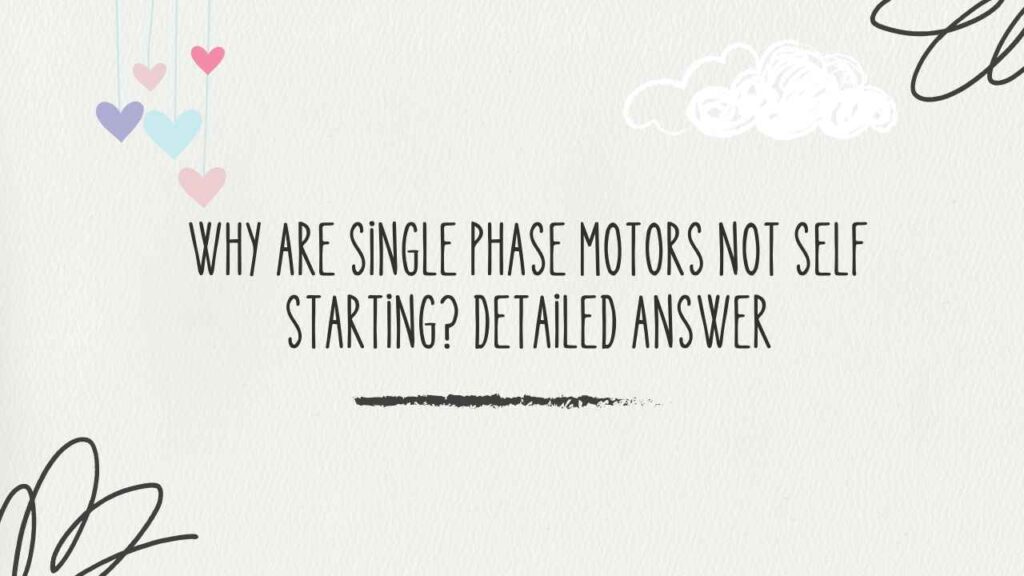
Why Are Single Phase Motors Not Self Starting? Detailed Answer
Hey there, looking for the answer of Why Are Single Phase Motors Not Self Starting? question then you are at the right spot. Here in this article will find the detailed 500 words answer of the following question, stay with us till the end and thanks for the reading the article.
Why Are Single Phase Motors Not Self Starting?
The main reason a single-phase induction motor does not self-start is that it generates a revolving magnetic field rather than a rotating magnetic field. This article will help us understand the concept.
Single-phase induction motors are primarily used in fans and blowers. These fractional-kilowatt machines are not designed to drive loads, but they are efficient and cost-effective for low-power applications such as fans or blowers.
One disadvantage of single-phase induction motors is that, unlike their three-phase counterparts, they do not self-start. Here, we’ll talk about how these motors work and why they don’t start themselves. We will also briefly discuss the techniques used to get them started on their own.
Working:
Our homes, offices, and other similar locations require low-power appliances, so we receive a single-phase supply from the distributor. Fans are one of the most common things we need, and because they must operate on a single-phase power supply, the motor used in them must be dependable, efficient, and cost-effective for the application. Single-phase motors meet all of these requirements. Let us examine the operation of this motor.
A single-phase induction motor consists of three major components: the stator, the rotor, and the windings. The stator contains the stationary windings that carry a single-phase AC current from the source. As a result, a magnetic field is formed in the air gap between the stator and rotor.
This magnetic field, however, does not rotate in the same way that a three-phase induction motor does. This field connects to the rotor windings. The air gap magnetic field is also alternating, as is the supplied voltage. This time-varying magnetic field generates induced EMF in the rotor conductors in accordance with Faraday’s law of electromagnetic induction.
According to Lenz’s law, the induced EMF attempts to neutralize the change by rotating. However, the rotor fails to rotate or self-start, as explained by the Double Rotating Field Theory.
Also Read: Mitti Ka Khilona Story in English: Clay Toys Story